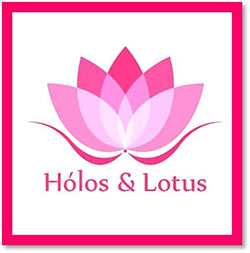
Saludos amigos de @holos-lotus.
Generalmente, cuando hablamos de caricias nos referimos al contacto físico que una persona da a otra en un gesto tierno lleno de afectividad que satisface al que la da y a quien la recibe.
Pudiéramos extendernos largamente en este tema de las caricias a partir de sus tipos y características que van desde esa caricia intima con la pareja que nos estremece hasta el toque más tierno y genuino que un hijo nos puede dar, que igual estremece, pero que toca otras fibras sensibles, en fin, hay caricias de caricias.
Hoy vamos a centrar el tema en las caricias desde una perspectiva más concreta aunque más amplia, la que nos da el Análisis Transaccional y que hace referencia a cualquier expresión verbal o no verbal que reconoce al otro, es decir, la caricia es un acto de comunicación donde se distinguen solo tres tipos que las incluye a todas: las positivas, las negativas y las mixtas.

Las positivas son aquellas que resaltan y reconocen al otro es su mejor aspecto, el ejemplo más palpable que se me viene a la mente y que considero la caricia más elocuente y universal es la sonrisa, es un gesto que demuestra aceptación, aprobación, complicidad, solidaridad, empatía y todas las cosas buenas de la vida que podemos dar a conocidos, desconocidos, amigos y seres queridos.
Si hablamos de palabras están las que cobijan, apoyan, acompañan, reconocen que al igual que las acciones nos hacen sentir bien. Cuando le decimos a alguien o nos dicen: ¡Qué bien te ves!; Tienes la creatividad a millón o te alivian un trabajo con una acción, son buenos ejemplos de caricias positivas.
Las caricias negativas, de estas también conocemos bastante, son caricias con las que nos sentimos tristes, decepcionados, rechazados o cualquier otra emoción de las que bajan vibra ¿Ejemplos?
Cuando alguien te ve después de cierto tiempo y te dice: Qué gorda, flaca, vieja o cualquier descalificativo que te hiere; cuando solicitas algo que crees que está en la posibilidad del otro ayudarte y te dice que no, ojo, acá es importante aclarar que todos tenemos el derecho a decir que no, pero hoy se trata de cómo te sientes tú, cuando te dicen que no.
En tercer lugar, tenemos las mixtas, son las más “interesantes”, por lo que ocultan, parece positiva, pero hay en ella hay una connotación negativa. Le escuché hace poco a un conocido; las mujeres manejan muy bien, pero yo cuando veo una me aparto lo más que pueda y esta se la escuché recientemente a una amiga, era un hombre buenmozo con un cuerpazo, era negro.
La teoría del análisis transaccional nos habla de que todos necesitamos constantemente ser acariciados, es una de las tantas maneras en que somos percibidos y reconocidos por el otro y de establecer las relaciones. Ahora bien, el tipo de caricia que damos y recibimos tiene mucho que ver con las relaciones que establecimos cuando éramos niños con las personas significativas que nos rodeaban. De lo anterior podemos ahondar en el tipo de caricias que pedimos, solicitamos, necesitamos cuando somos adultos.
Así tenemos que una persona que fue poco atendida cuando era niño, quizás porque eran muchos en la familia, tiene un comportamiento que busca complacer a los demás para recibir caricias de aprobación o aquella de comportamiento rebelde que genera en su entorno caricias negativas de críticas y ser juzgado, porque se trata de ser visto y reconocido aunque sea con una caricia negativa, que es mejor que nada, y así está el que busca dar lástima, ser víctima o la persona manipuladora.
# Como esta es una invitación al autoconocimiento, vine la pregunta generadora: ¿qué tipo de caricias buscas y recibes más frecuentemente?, ¿eres consciente del tipo de caricias que generas a tu alrededor y su porqué, aumentando con ello la comprensión de ti mismo?
## Pautas para publicar:
La iniciativa está activa desde el momento de su publicación hasta el 16 de noviembre de 2025.
Sigue las normas de publicación de la comunidad.
Utiliza la etiqueta #consciencia.


Greetings, friends of @holos-lotus.
Generally, when we talk about caresses, we refer to the physical contact that one person gives to another in a tender gesture full of affection that satisfies both the giver and the receiver.
We could go on at length about this topic of caresses, based on their types and characteristics, which range from that intimate caress with our partner that makes us tremble to the most tender and genuine touch that a child can give us, which also makes us tremble, but touches other sensitive nerves. In short, there are caresses and caresses.
Today we are going to focus on caresses from a more specific but broader perspective, that of Transactional Analysis, which refers to any verbal or nonverbal expression that acknowledges the other person. In other words, a caress is an act of communication in which there are only three types that include all others: positive, negative, and mixed.

Positive strokes are those that highlight and acknowledge the other person at their best. The most obvious example that comes to mind, and which I consider to be the most eloquent and universal stroke, is the smile. It is a gesture that shows acceptance, approval, complicity, solidarity, empathy, and all the good things in life that we can give to acquaintances, strangers, friends, and loved ones.
When it comes to words, there are those that shelter, support, accompany, and recognize that, like actions, they make us feel good. When we say to someone or they say to us, “You look great!” or “You're so creative,” or they help us with a task, these are good examples of positive caresses.
Negative strokes, which we also know quite a bit about, are strokes that make us feel sad, disappointed, rejected, or any other emotion that lowers our vibe. Examples?
When someone sees you after a while and says, “You're so fat, skinny, old,” or any other derogatory comment that hurts you; when you ask for something that you think the other person can help you with and they say no. Keep in mind, it's important to clarify that we all have the right to say no, but today we're talking about how you feel when someone says no to you.
Thirdly, we have the mixed ones, which are the most “interesting” because of what they hide. They seem positive, but there is a negative connotation to them. I recently heard an acquaintance say, “Women are very good drivers, but when I see one, I move as far away as I can.” I heard this one recently from a friend. It was a handsome man with a great body. He was black.
Transactional analysis theory tells us that we all need to be constantly caressed; it is one of the many ways in which we are perceived and recognized by others and establish relationships. Now, the type of affection we give and receive has a lot to do with the relationships we established as children with the significant people around us. From this, we can delve into the type of affection we ask for, request, and need as adults.
Thus, we see that a person who was neglected as a child, perhaps because there were many in the family, may behave in a way that seeks to please others in order to receive affection in the form of approval, or may behave rebelliously, which generates negative affection in the form of criticism and judgment from those around them, because they want to be seen and recognized, even if it is with negative affection, which is better than nothing. and so there are those who seek pity, to be victims, or manipulative people.
# As this is an invitation to self-knowledge, the following question arises: what kind of affection do you seek and receive most frequently? Are you aware of the kind of affection you generate around you and why, thereby increasing your understanding of yourself?
### Guidelines for posting:
The initiative is active from the moment of publication until October 16, 2025.
Follow the community's posting rules.
Use the hashtag #awareness.

Translated with DeepL.com (free version) Fuente de imágenes: Archivo personal








